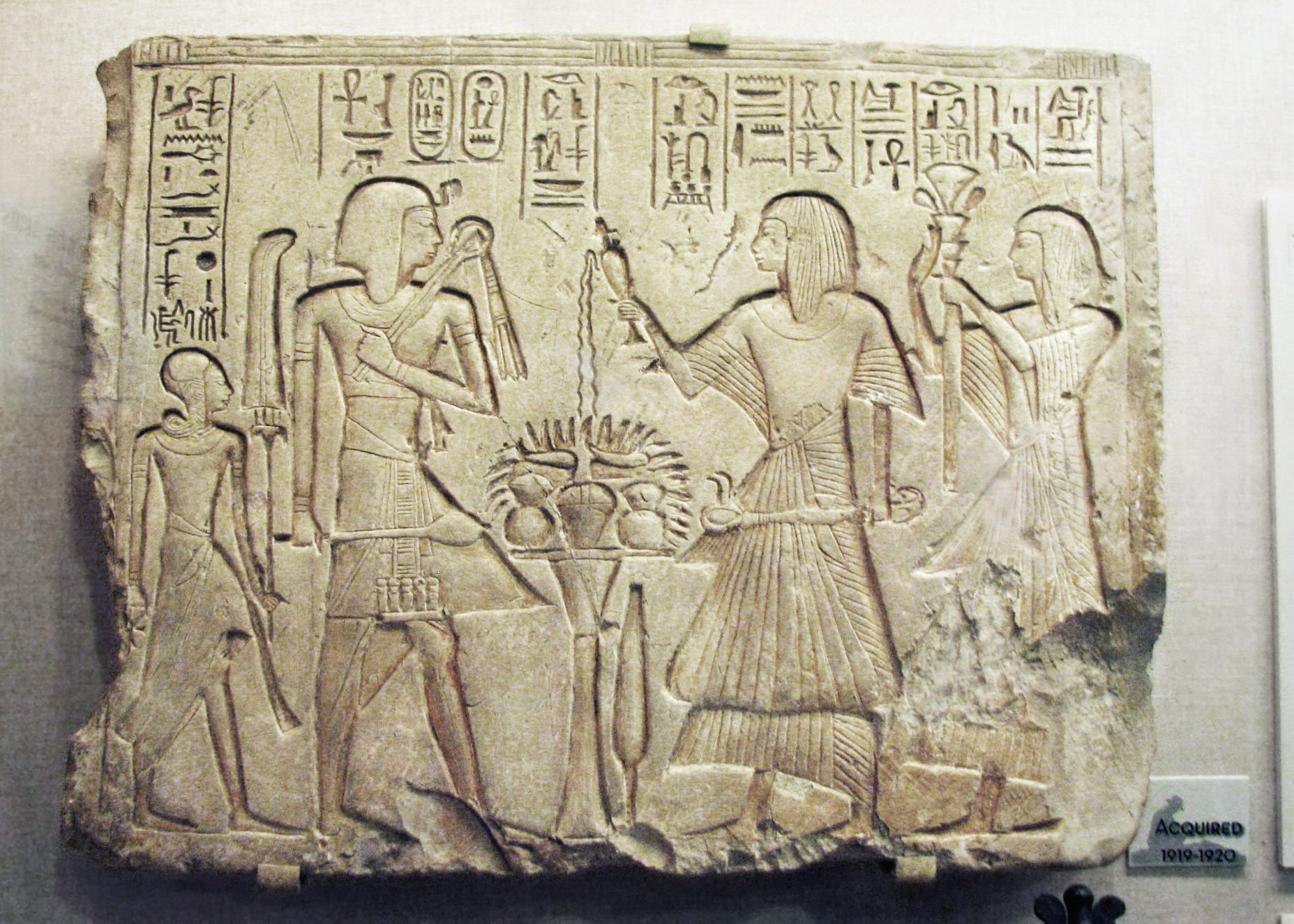
New Kingdom, Dynasty 19, Reign of Seti I, ca 1291-1279 BCE
Purchased in Cairo, 1919, OIM 10507
Photo ©Joan Ann Lansberry, 2010
|
(From museum info card): "Mythically, kingship was passed from Osiris (the deceased king) to the "Living Horus" (his eldest son and successor). This stela shows King Seti I (second from left) and his son, later Ramesses II ("The Great"), who stands behind him. Ramesses wears his hair in a side-lock, a style characteristic of a youth or of a special type of priest, and he carries a slender ostrich feather fan that was a sign of his high rank. "This relief was probably commissioned by the two priests shown at the right to commemorate their function in the religious cult of the royal family. Showing oneself in the presence of the king was a great honor."
(From _Ancient Egypt: Treasures of the Oriental Institute_, by Emily Teeter, page 57): Above Ramesses: The bodily son of the king, his beloved, Ramesses. Left priest: The Osirus, the Scribe of the Offering Table of the Lord of the Two Lands, Amun-wahsu, justified, repeating of life. Right priest: The Osirus, the Royal Scribe, Tia, justified. "The emphasis placed upon the action of Amun-wahsu suggests that this stela was commissioned by him for a memorial chapel, or perhaps his own tomb, to commemmorate his role in the cult of the royal family. The relationship between the two priests is not clear, but it is possible that they were brothers, under which circumstances it would be appropriate to share a funerary monument." |


